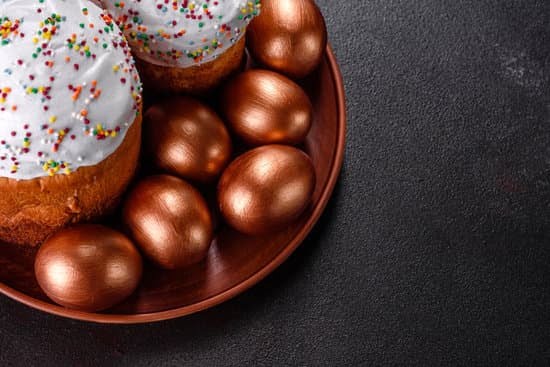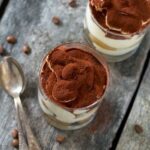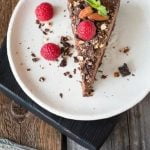Fondant cake decorating has become increasingly popular in recent years, as it offers a versatile and stunning way to create beautifully designed cakes. In this article, we will explore the art of decorating a 3 tier cake with fondant, showcasing its elegance and sophistication.
Whether you are a professional baker or a home baker looking to elevate your cake decorating skills, this guide will provide you with the essential tips, techniques, and tools needed to create an impressive centerpiece for any occasion.
For those unfamiliar with fondant, it is a smooth icing-like substance that can be rolled out into thin sheets and draped over cakes to create a flawless finish. Its flexibility allows for various intricate designs and decorative elements that are bound to impress your guests. In this section of the article, we will delve into the growing popularity of fondant as a cake decorating medium and introduce the topic of decorating a 3 tier cake with fondant.
Preparing your 3 tier cake for fondant decoration requires careful attention to detail in order to achieve professional results. This includes baking and assembling a sturdy cake structure that can support multiple tiers without collapsing. Additionally, properly leveling and filling the cake layers ensures evenness when applying fondant. Chilling the cake before applying fondant is essential as it helps firm up the layers and prevents any slippage or distortion during the application process.
With this introduction, we lay the foundation for our exploration of how to decorate a 3 tier cake with fondant. We will further discuss preparing your cake for fondant decoration by offering insightful tips on baking and assembly techniques as well as proper leveling and chilling methods. So let’s dive in and discover the magic of transforming plain cakes into works of art using Fondant.
Preparing Your 3 Tier Cake for Fondant Decoration
When it comes to decorating a 3 tier cake with fondant, proper preparation is key to achieving a flawless finish. Before diving into the fun and creative aspects of fondant cake decoration, it is essential to ensure that your cake is well-built and ready for the fondant application.
To start, make sure you follow a reliable recipe for baking a sturdy cake. A dense and firm cake will be able to support the weight of the fondant and any additional decorations. It is also important to assemble your tiers securely using dowels or other supports to prevent them from collapsing under the weight.
After baking and assembling your cake, it is crucial to properly level and fill each layer. Trimming any domed tops will create an even canvas for the fondant and prevent any lumps or bumps in the final result. Additionally, filling each layer with a thick layer of frosting or filling will add stability and moistness to the cake.
Once your cake is assembled and leveled, it’s time to chill it before applying fondant. This step helps firm up the layers and makes them easier to work with when adding the fondant. Place your cake in the refrigerator for about 30 minutes or until firm to the touch.
| Tips |
|---|
| Bake a sturdy cake |
| Securely assemble tiers |
| Level and fill each layer evenly |
| Chill the cake before applying fondant |
Essential Tools and Ingredients for Fondant Cake Decorating
Decorating a 3 tier cake with fondant requires the use of specific tools and ingredients to ensure successful and professional-looking results. Here is a detailed list of essential tools and ingredients that you will need for fondant cake decorating:
Tools:
- Rolling pin: A non-stick rolling pin is essential for rolling out the fondant to the desired thickness.
- Smoothers: Fondant smoothers are used to achieve a smooth finish on the cake surface and edges.
- Fondant cutters: These come in various shapes and sizes, allowing you to create intricate designs and decorations.
- Ball tool set: This set includes different sizes of ball tools, which are used to add texture or shape fondant decorations.
- Brushes: Soft brushes are needed for applying water or edible glue to attach fondant decorations.
- Piping bags and tips: These are useful for piping details onto the cake using royal icing or buttercream.
- Turntable: A rotating turntable makes it easier to handle and decorate all sides of the cake.
Ingredients:
- Fondant: Choosing high-quality fondant is crucial for achieving smooth coverage and easy workability. Look for brands known for their taste and texture.
- Icing sugar (powdered sugar): This is used as a dusting agent while kneading, rolling, and handling the fondant.
- Gel food coloring: Gel-based colors are recommended as they provide vibrant shades without altering the consistency of the fondant.
- Edible paints or dusts: These can be used to add shimmer or enhance details on the finished cake.
When selecting your tools and ingredients, it’s important to invest in quality products that will yield great results. Opting for trusted brands will ensure that your decorating experience is enjoyable and that your final product looks professional.
Kneading and Coloring the Fondant
To achieve a smooth and pliable fondant, proper kneading is crucial. Follow these step-by-step instructions to ensure optimal results:
- Start by dusting your work surface with icing sugar to prevent the fondant from sticking. Place the desired amount of fondant on the surface.
- Use the heels of your hands to push down and stretch the fondant away from you. Fold it back over itself, then rotate it a quarter turn. Repeat this process until the fondant becomes soft, smooth, and elastic in texture.
- If the fondant feels too sticky, gradually incorporate more icing sugar into it. Make sure to do this gradually, as adding too much icing sugar can dry out the fondant.
4.Occasionally lift and flip the fondant while kneading to ensure that it is evenly mixed.
Once you have achieved a smooth consistency, it’s time to add color to your fondant:
1.Begin by wearing disposable gloves to prevent color transfer onto your hands.
2.Start with a small amount of gel food coloring and knead it into the fondant. Add more coloring as needed until you achieve the desired shade.
3.Remember that gel food coloring is concentrated, so start with a small amount and gradually add more as necessary. This will allow you to control the intensity of the color.
4.If you need multiple colors for your cake design, divide your fondant into smaller pieces before coloring them separately.
Estimating the amount of fondant needed for each tier is important not only for achieving a well-decorated cake but also for avoiding waste. Here are some recommendations:
1.Measure the height and width of each tier using a ruler or measuring tape. These measurements will help you determine how much rolled-out fondant you will need to cover each tier completely.
2.It’s always better to have more fondant than not enough, as any excess can be trimmed off later.
3.For a round cake tier, use the formula 3.14 x diameter to calculate the perimeter. Multiply this by the height of the tier to find the surface area that needs to be covered.
4.For a square or rectangular cake tier, measure each side and multiply by the height of the tier to find the surface area that needs to be covered.
By following these guidelines for kneading and coloring fondant, as well as estimating the amount needed for each tier, you’ll be well on your way to creating a beautifully decorated 3-tier fondant cake.
Rolling Out and Applying Fondant to Your 3 Tier Cake
Once you have prepared your 3 tier cake and gathered all the necessary tools and ingredients, it’s time to roll out the fondant and apply it onto your cake. This step requires careful handling and precision to ensure a smooth finish. Follow these techniques to achieve professional-looking results.
Rolling Out a Large Fondant Sheet
To cover a 3 tier cake with fondant, you will need a large sheet of rolled fondant. Here are some techniques for rolling out the fondant evenly:
- Dust your work surface and rolling pin with icing sugar to prevent sticking.
- Take a portion of fondant (slightly larger than what you estimate you will need for one tier) and knead it until pliable.
- Roll out the fondant into a large circle or rectangle, making sure it is about 1/8 to 1/4 inch thick. Use gentle but firm pressure while rolling, flipping the fondant occasionally to ensure an even thickness.
- Measure the size of each cake tier before cutting out the rolled fondant. Add extra inches to accommodate for draping over the sides of the cake.
- Trim excess fondant from around each tier using a sharp knife or pizza cutter.
Applying Fondant onto Each Tier
After rolling out your large sheet of fondant, carefully lift it and drape it over the first tier of your cake. Smooth down gently with your hands, starting from the top center and working towards the sides and then down along the sides of the tier.
Continue this process for each remaining tier. If needed, use a small non-stick rolling pin or smoothers to help press down any air bubbles or creases in the fondant as you work your way around each tier.
To create clean edges at the base of each tier, gently lift the excess fondant up and away from the cake, and use your other hand to smooth the fondant against the cake tier. Trim off any excess fondant at the base using a sharp knife or pizza cutter.
It is important to note that if you encounter any tears or wrinkles in the fondant, you can patch them by kneading a small amount of fondant and using it to cover the imperfection.
Now that you have successfully applied the fondant onto each tier of your 3 tier cake, it’s time to move on to the next step: smoothing and shaping the fondant for a flawless finish.
Smoothing and Shaping the Fondant
Once you have successfully rolled out and applied the fondant onto your 3 tier cake, the next step is to achieve a flawless finish by smoothing and shaping the fondant. This process is crucial for creating a professional-looking cake that is visually appealing. Here are some techniques to help you achieve a smooth and perfectly shaped fondant cake.
One of the essential tools for achieving a flawless finish is smoothers. Smoothers are flat, paddle-like tools that are used to press the fondant against the cake, eliminating any air bubbles or wrinkles. To use smoothers effectively, hold them firmly against the cake’s surface and move them in small circular motions, gradually working your way from the top to the bottom of each tier. Repeat this process until all surfaces are smooth and even.
Another important technique for achieving a perfect finish is eliminating air bubbles. Air bubbles can cause imperfections in the fondant and make it more prone to tearing or wrinkling. To eliminate air bubbles, gently press down on any noticeable pockets of air using your fingertips or a pin. Be careful not to press too hard as this can puncture the fondant.
Creating sharp edges on your fondant cake adds an elegant touch to its overall appearance. To achieve sharp edges, use a sharp knife or palette knife to trim off any excess fondant at the base of each tier. Hold the knife at an angle and carefully cut away any uneven edges, ensuring that they are straight and even.
For those looking to add intricate details and patterns to their fondant cake, there are various techniques you can try. Quilting involves making straight lines or diamond patterns across your fondant with a ruler or embossing tool. Ruffles can be achieved by using a ribbon cutter or frill cutter to create thin strips of fondant, which are then molded into ruffled shapes before being attached to your cake.
With these techniques, you can achieve a beautifully smooth and shaped fondant cake. Remember to take your time and be patient during this process, as achieving a flawless finish requires precision and attention to detail. By mastering these skills, you will be able to create stunning cake creations that are sure to impress your guests.
Decorating and Adding Detail to Your 3 Tier Fondant Cake
Once you have successfully rolled out and applied fondant to your three-tier cake, it is time to let your creativity shine by adding decorative elements and intricate details. Decorating a fondant cake allows you to personalize the design and theme of the cake, making it perfect for any occasion such as a wedding or birthday celebration. Here are some ideas and techniques to consider when adding detail to your three-tier fondant cake.
One popular way to add flair to your cake is by incorporating fondant decorations such as flowers or bows. To create fondant flowers, roll out small pieces of colored fondant and use flower cutters or molds to shape them. Place the flowers strategically on the cake tiers using edible glue or water as an adhesive.
You can also create bows by molding strips of fondant into loops and attaching them together with edible glue. These decorative elements will add a touch of elegance and charm to your three-tier cake.
In addition to fondant decorations, there are other options for enhancing the visual appeal of your cake. Edible paints or dusts can be used to add color, shimmer, or a metallic finish to certain areas of your design. Simply mix these products with a bit of clear alcohol or lemon extract until it reaches a paint-like consistency, then use brushes or airbrushes to apply onto the fondant surface.
Remember that decorating a three-tier fondant cake provides endless opportunities for personalization. Don’t be afraid to let your imagination run wild. Whether it’s creating designs inspired by nature, incorporating a favorite hobby, or paying homage to a specific theme, embrace your creativity and make the cake truly one-of-a-kind.
By carefully considering each element – from color scheme and design motif to embellishments and finishing touches – you can transform a simple three-tier cake into an eye-catching masterpiece that will impress both visually and taste-wise. So go ahead and have fun decorating your three-tier fondant cake, and enjoy the satisfaction and joy of showcasing a beautifully decorated confection that will surely be the highlight of any celebration.
Tips for Transporting and Storing Your 3 Tier Fondant Cake
Transporting and storing a 3 Tier Fondant Cake can be a challenging task due to its size, weight, and delicate decorations. However, with proper preparation and attention to detail, you can ensure that your cake arrives at its destination in pristine condition. Here are some tips to help you transport and store your 3 Tier Fondant Cake successfully:
Safety Measures for Transportation
When transporting a 3 Tier Fondant Cake, it is essential to prioritize its stability and prevent any mishaps during the journey. Start by placing each tier on a sturdy cake board that is slightly larger than the cake itself. This will provide a solid foundation and minimize the risk of the tiers shifting or toppling over.
To secure the tiers together, use dowels or plastic support rods. Measure the height of each tier accurately and insert the support rods vertically through all layers except the top tier. Trim them flush with the top of the cake to ensure stability without compromising aesthetics.
It is also advisable to box each tier separately before stacking them together. Use cardboard boxes that are snug enough to prevent movement but not tight enough to damage the fondant decorations. Securely tape the boxes shut, label them appropriately, and stack them carefully in a cooler or large container for easy transportation.
Proper Storage Techniques
After reaching your destination safely with your 3 Tier Fondant Cake, proper storage techniques will help maintain its freshness and preserve its visual appeal until it is ready to be served. Avoid exposing it to direct sunlight or extreme temperatures as this can cause melting or drying of both the fondant and cake.
If possible, store the cake in an air-conditioned room or refrigerate it if necessary. However, remember that condensation can form on chilled cakes when exposed to warmer temperatures, potentially damaging the fondant’s appearance. To prevent this issue, allow sufficient time for your cake to reach room temperature before serving.
To protect your fondant decorations, cover the entire cake with a cake dome or store it in a large airtight container. This will shield the cake from dust, humidity, and potential accidents that may compromise its appearance during storage.
Avoiding Common Mistakes and Challenges
Transporting and storing a 3 Tier Fondant Cake can present unique challenges, but being aware of common mistakes can help you avoid them. One common mistake is stacking the tiers before they are thoroughly chilled or set. Always allow sufficient time for each tier to firm up before assembling to prevent sagging or collapsing.
Another challenge is handling the cake too roughly during transportation, which can cause damage to delicate decorations. Ensure that whoever is transporting the cake understands its fragile nature and takes appropriate precautions during handling.
Finally, be mindful of removing any non-edible supports like dowels or support rods before serving the cake. Inform your guests about their presence and ensure they are easily identifiable to prevent any accidents while enjoying the delicious treat.
By following these tips for transporting and storing your 3 Tier Fondant Cake, you can ensure that all your hard work in decorating remains intact until it is ready to be showcased and enjoyed by your loved ones or clients. Remember that practice makes perfect, so don’t be discouraged if you face some challenges along the way. With experience, you will become more confident in successfully handling and preserving these magnificent creations made with fondant.
Conclusion
In conclusion, decorating a 3 tier cake with fondant can be a rewarding and gratifying experience. Throughout this article, we have explored the step-by-step process of preparing and decorating a 3 tier cake with fondant, from baking and assembling the cake layers to adding intricate details and personalized designs. By following the tips and techniques provided, you can achieve professional-looking results that will impress your guests and showcase your creativity.
It is important to remember that working with fondant requires patience and practice. The key to success lies in properly kneading and coloring the fondant, as well as rolling it out and applying it smoothly onto each tier. The use of essential tools such as smoothers, cutters, and gel food coloring also play a crucial role in achieving flawless finishes and vibrant colors.
While following the steps outlined in this article is important for success, it is equally important to embrace your creativity. Fondant provides endless possibilities for design, allowing you to create unique decorations and themes for your cake. Whether you’re creating a wedding cake or a birthday cake, don’t be afraid to experiment with different shapes, patterns, and color combinations.
Frequently Asked Questions
How do you stack a 3 tier cake with fondant?
Stacking a 3-tier cake with fondant requires careful preparation and execution. Start by ensuring that each tier is level and properly cooled before assembly. To stack the tiers, apply a thin layer of buttercream or ganache between each layer to act as an adhesive. Next, insert dowel rods into the bottom two tiers to provide support for the upper tiers.
Trim the dowels so they are flush with the top of the cake layers. Finally, carefully lift and place each tier on top of one another, ensuring they are centered and aligned. Roll out your fondant and drape it over the stacked layers, smoothing it down gently from the top to avoid any air bubbles or wrinkles.
How far in advance can I put fondant on a cake?
Fondant can be applied to a cake as early as 1-2 days in advance, but this depends on several factors such as humidity levels and temperature conditions. It is generally recommended to allow a freshly covered fondant cake to sit at room temperature for at least 24 hours before serving, as this allows time for any moisture trapped underneath the fondant to evaporate and results in a smoother appearance.
However, if you live in a hot or humid climate, it may be best to apply the fondant closer to when you plan on serving the cake to prevent potential issues with sagging or melting.
What frosting is best under fondant?
The best frosting to use under fondant is typically a smooth buttercream or ganache. Both these frostings create a sturdy base that helps adhere the fondant securely to the cake’s surface while also providing a delicious flavor profile. When using buttercream under fondant, it’s important to ensure you achieve an ultra-smooth finish before applying the fondant.
This can be achieved by chilling the crumb-coated cake in the refrigerator and then using tools like scrapers or smoothers for final touch-ups. Ganache, made from chocolate melted with heavy cream, provides an even firmer surface for fondant, resulting in sharp edges and a clean appearance. Ultimately, the choice between buttercream and ganache will depend on personal preference, the type of cake being used, and the desired flavor combination.

Welcome to our cake decorating blog! My name is Destiny Flores, and I am the proud owner of a cake decorating business named Cake Karma. Our mission is to provide delicious, beautiful cakes for all occasions. We specialize in creating custom cakes that are tailored specifically to each customer’s individual needs and tastes.





